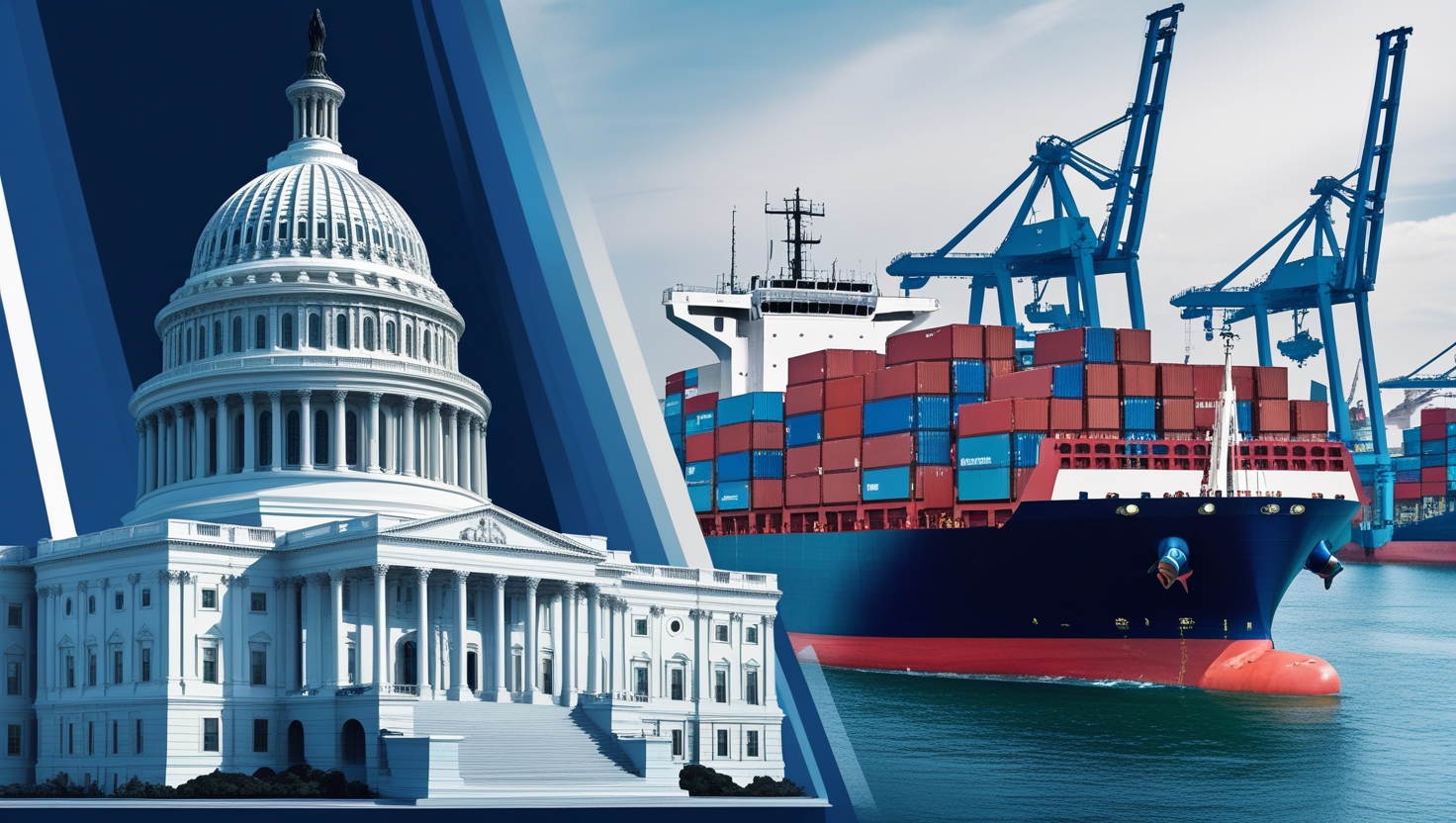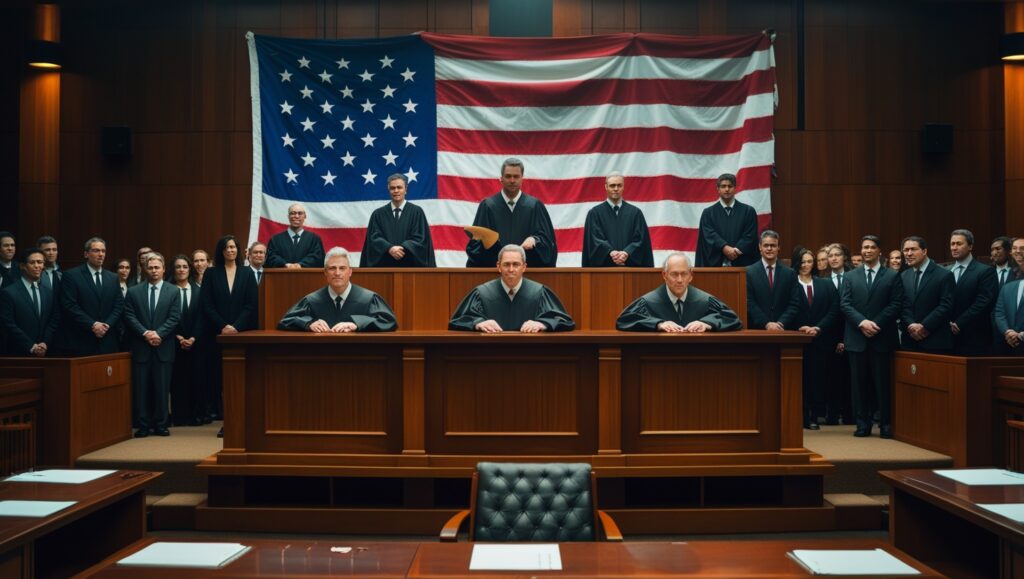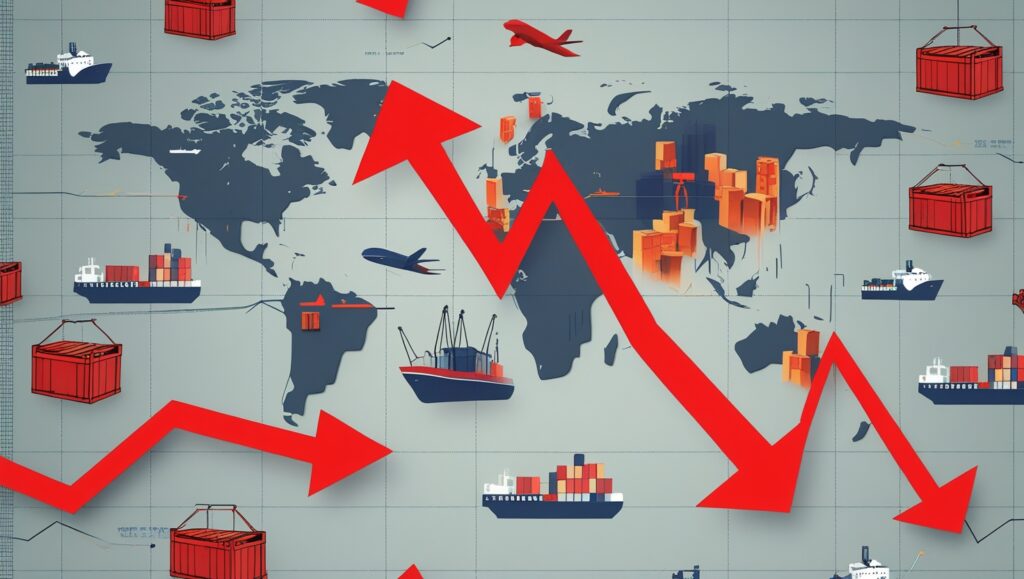Physical Address
304 North Cardinal St.
Dorchester Center, MA 02124
Physical Address
304 North Cardinal St.
Dorchester Center, MA 02124

The Appeals Court invalidates the majority of Trump’s tariffs in a stunning legal turn that could fundamentally alter American trade policy, casting doubt on the core of one of the former president’s most assertive economic policies. These tariffs were promoted for years as a defense for American businesses and a way to combat international competition. The legitimacy of those measures has now been questioned following a broad ruling by the U.S. Court of Appeals for the Federal Circuit, which has caused repercussions in both local and international political circles.
This decision is not merely a technicality; rather, it makes a strong statement regarding the boundaries of presidential authority and Congress’s responsibility in overseeing global trade. Businesses, legislators, and trading partners are rushing to ascertain the implications of this for the future as the dust settles.

In a historic ruling, the federal appeals court declared that a large number of President Donald Trump’s tariffs levied under the International Emergency Economic Powers Act (IEEPA) were unconstitutional. The court determined that the Act did not permit Trump to impose broad import taxes using emergency powers. The court came to the conclusion in a 7–4 decision that although the president does have a great deal of power under emergency laws, that authority does not include the ability to unilaterally impose taxes or tariffs.
This result lays the groundwork for a possible Supreme Court clash while upholding a previous decision from a lower court. To give the Trump administration time to file an appeal, the tariffs are currently in effect until the middle of October. However, the message is unmistakable: Congress must be consulted before the executive branch can change trade policy.
Reexamining the beginnings of Trump’s tariff policy is crucial to comprehending the significance of this decision. Citing national security concerns, the administration started levying duties on imports of steel and aluminum in 2018. A series of subsequent duties targeting hundreds of imports from nations including as China, Canada, Mexico, and EU members followed these initial actions.
Trump’s strategy sprang from his perception that international trade agreements had exploited the United States. He maintained that tariffs would push foreign governments to negotiate more equitable terms, safeguard home businesses, and lower trade deficits. From the beginning, the plan was divisive, drawing criticism from corporations, international friends, and economists.
Trump’s use of the judicial system was what made his tariffs so controversial. He circumvented conventional trade routes and enforced duties through executive orders by citing IEEPA, a law created for emergencies like terrorism or cyberattacks. Lawsuits soon followed, with critics claiming that this was an abuse of power.

Wide-ranging effects result from the Appeals Court’s decision to invalidate the majority of Trump’s tariffs. In terms of the economy, it allows companies to request reimbursement for billions of dollars in duties that they have already paid. There may now be relief for small importers, many of whom found it difficult to survive as a result of these duties. Politically, the ruling rekindles discussions regarding the president’s power and Congress’s involvement in trade issues.
The decision may make current trade agreements more difficult to implement internationally. Trump’s tariff-targeted nations may now demand renegotiation or postpone agreements. Additionally, the decision encourages a return to multilateral negotiations and diplomacy by signaling a move away from unilateral trade actions.
The ruling’s proponents contend that it restores constitutional balance and shields companies from erratic changes in policy. The court has made a clear distinction between parliamentary oversight and executive ambition by reiterating that only Congress has the authority to impose tariffs.
However, detractors caution that the choice might make it more difficult for the president to act quickly in the face of economic dangers. They contend that adaptability is essential in a world that is evolving quickly and that this decision would limit the options available to future administrations.
It’s interesting to note that Trump himself defied the ruling, stating that all tariffs would stay in place and promising to challenge the ruling in the Supreme Court. He framed the issue as a fight for economic sovereignty and warned that lifting the tariffs would hurt American workers and weaken the country.

Numerous industries are already feeling the effects of this decision. Due to unexpected tax increases, wine importers—who were among the first to contest the tariffs in court—have seen their expenses soar. Consumers have paid more for everything from smartphones to washing machines, while IT businesses that depend on Chinese components have seen higher production costs.
Trade relations with important partners are also impacted by the decision. Agreements made to lower reciprocal tariffs with South Korea, Japan, and the European Union may now be in doubt. Another area of concern is the tariffs placed on Canada, Mexico, and China in an attempt to reduce the flow of fentanyl.
Why were the majority of Trump’s tariffs overturned by the Appeals Court?
The court decided that the president cannot apply sweeping import tariffs under the International Emergency Economic Powers Act. The judges concluded that Trump’s actions were unconstitutional and went beyond the bounds of the law.
Are Trump’s tariffs all void now?
No. Some are still in effect while the majority are being reviewed by the Supreme Court. Tariffs levied under other acts, such those on aluminum and steel, are not impacted.
Will companies receive reimbursements?
Maybe. Businesses might be eligible for reimbursements for tariffs they have already paid if the Supreme Court upholds the decision. If that occurs, legal experts anticipate a surge of claims.
What impact does this have on presidents in the future?
The ruling restricts a president’s power to levy tariffs without the consent of Congress. It emphasizes how crucial trade policy checks and balances are.
What follows?
It is anticipated that the Trump administration will file an appeal with the Supreme Court. Months may pass before a final judgment is made, but it will probably have a long-term impact on US economic policy.
The Appeals Court’s ruling invalidating the majority of Trump’s tariffs is a turning point in the development of US trade policy. It provides a lifeline to companies hit by years of erratic import taxes, reaffirms the role of Congress, and challenges the idea of executive authority.
The stakes are quite high as the case makes its way to the Supreme Court. The decision will establish a standard for how the US interacts with the international economy in addition to deciding the destiny of billions in tariffs. This is an interesting tale to follow whether you’re a business owner, a policy enthusiast, or just interested in the direction of trade.
Let us know your thoughts in the comments below. Should presidents have the power to impose tariffs unilaterally, or should Congress always have the final say? The conversation is just beginning.